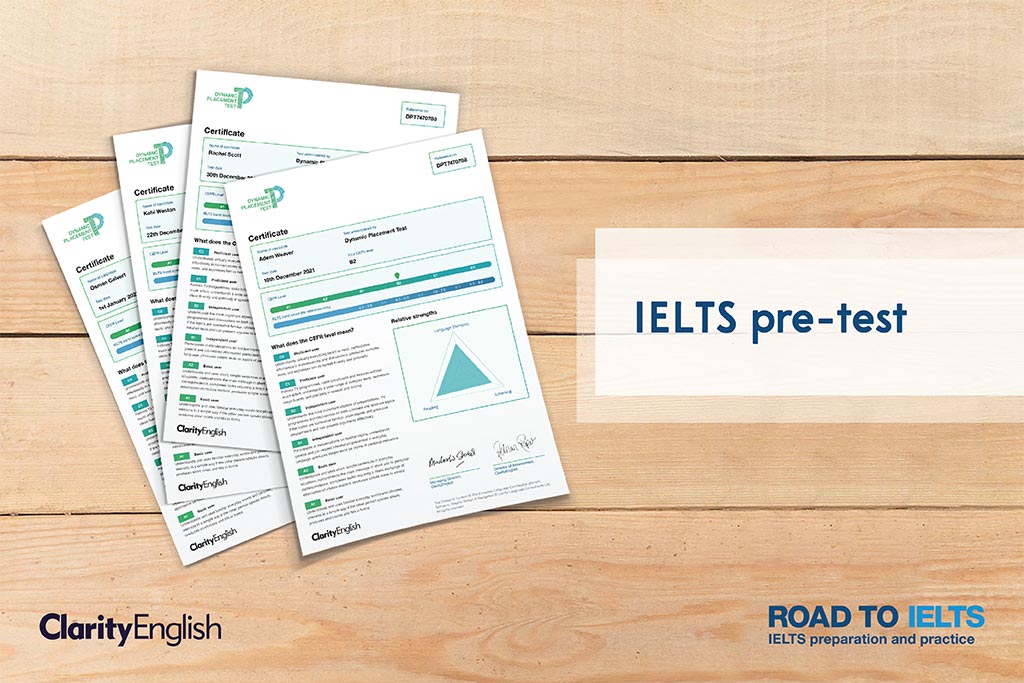Lucas Gade from Atlas English discusses a successful strategy for reducing the number of expensive, time-consuming IELTS retakes.
Imagine you want to join the Fire Services Department as a firefighter. As part of the recruitment process you have to go through a fitness test: 32 press-ups in 60 seconds, a vertical jump of 45 cm, nine parallel bar dips, and so on. This is not what you will have to do in a burning building; it is a gateway test to see whether, at the time of the test, you are physically up to the job. If you fail, there is nothing to stop you putting in some training and coming back in a few weeks or months to try again.
In this post, I will argue that we can apply the same tried and tested principle to optimising IELTS outcomes, and especially to reducing the number of expensive, time-consuming retakes. What’s needed is a simple, low-cost gateway test which can screen out those candidates who will not be able to achieve their target IELTS score in the next two or three months.
The high incidence of IELTS candidates failing to achieve their target score is problematic in a number of areas:
- It is difficult for employers and recruiters to predict which (and how many) candidates will be able to fill positions offered. This is especially true in the healthcare sector.
- For universities, a shortfall in the number of applicants able to take up their place has dramatic financial implications.
- For candidates themselves, “failing” IELTS disrupts plans, and often results in the significant expense of multiple retakes.
A recent (2019) paper published by Language Testing Asia shows how serious this problem is in terms of volumes:
“The present study analyses the relationship between the test results and stated band score objectives of a cohort of 600 IELTS candidates… It was uncovered that more test-takers failed to meet their band score goals (n = 281) than achieved them (n = 245).”
Similarly, in 2017, HCL Workforce, a healthcare recruitment company reported:
“Less than 20% of our overseas nurses have passed the IELTS test. Our own stats reveal that 694 of 848 candidates have failed to achieve IELTS Academic level 7.”
Then there is the human side. For a healthcare worker in the Philippines IELTS is hugely expensive: the average monthly income in the Philippines is a little under €400; the cost of the IELTS test is €205. Very often IELTS candidates in this sector are caring for family and working full time as well as preparing for the test, so time is a concern too. It is therefore incumbent on us to ensure that they have the best possible chance of “passing” at their first attempt.
Indeed, the British Council and IDP recognise that there is a reputational issue with high rates of failure, and provide preparation and practice materials such as IELTS Essentials (IDP) and Road to IELTS (which Clarity co-publishes with the British Council). But while these support resources can make all the difference for candidates at the right level, there is little that they can achieve if the candidate’s level of English does not match their IELTS target. If the test taker’s English is at IELTS 5.5, then it doesn’t matter how much exam practice they do: their chances of achieving their target of IELTS 7.0 are zero.
So the question boils down to this. Can we identify candidates whose level of English means they have no possibility of achieving their IELTS target? As with the Fire Services fitness test, we are concerned with screening out rather than predicting success. This is an important distinction: using a low-cost level test to predict successful IELTS scores is likely to fail because it takes no account of the demanding IELTS task types. The same test, however, can reliably identify those potential test takers who will not achieve their goal.
Any valid, reliable placement test will be able to achieve this. Indeed, it can go further and draw on research to advise that if you are currently at IELTS 6.0 and your target is IELTS 7.0, then you should schedule in at least 100 hours of General English, in addition to your IELTS-specific preparation, before attempting the test. We have adopted just this approach using the Dynamic Placement Test with healthcare recruitment companies in the UK and the US. The process is to test the applicants’ English and deliver a chart showing where they are now, where they need to be to have the potential to achieve IELTS, and, in broad terms, what they need to do to get there.
“I want to improve and preparation of IELTS please help me,” pleads Dina de Guzman on IDP’s IELTS Facebook page. Dina knows where she needs to get to: an IELTS 7.0 so she can work as a nurse in the UK. So it is surely better to help her understand where her level of English is now, so we can help her plan that IELTS journey. The Dynamic Placement Test can do just that. And if it shows that she is significantly below her target level, she saves €200 on an IELTS test she is sure to fail as well as the time and stress of the test. And there is nothing to stop her putting in some training and coming back in a few weeks or months to try again.
Further reading:
The effects of IELTS “fails” on the university sector
Dynamic Placement Test
Road to IELTS

